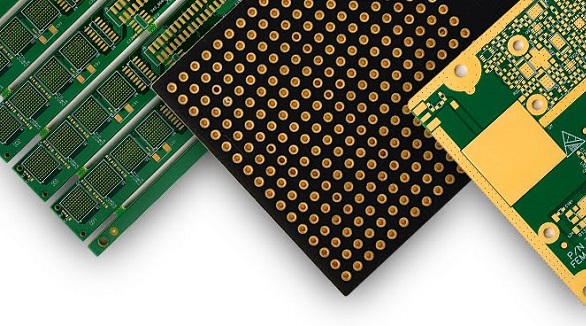How to Reduce PCB Assembly Cost
Optimize PCB assembly costs by minimizing board size, simplifying design, using standard components, and leveraging serial production while balancing cost and quality for competitive manufacturing.
In the competitive landscape of PCB manufacturing, some of the challenges involve how to reduce costs without giving up performance, reliability, and quality. A number of processes, materials, and technologies affect the overall production cost of PCB assembly. Cost-effective manufacturing with higher standards of quality can be achieved with strategic planning. The following is a detailed guide on how to effectively optimize the cost of PCB assembly.
Cost Drivers for PCB Assembly
In order to understand how costs can be reduced for PCB assembly, it is important to understand the cost drivers. Key cost drivers are as follows:
Board size: The larger the board, the more material and labor it requires. Smaller dimensions in a board can bring considerable savings.
Design complexity: A complex design demands accurate assembly methods and special equipment. The manufacturing process becomes costlier due to this factor.
Component Quantity and Type: The greater the number of components, the longer it takes to place and solder. Rare components may also drive up the cost.
Technology Choice: Surface Mount Technology is generally less expensive compared to Through-Hole Technology because it uses automation.

Key Cost-Effective Approaches
Optimize Size and Design
The size and design are major cost drivers in PCBs. Shrinking down board size reduces material costs and lowers manufacturing time. Simplifying design reduces the complexity of the design and, therefore, directly cuts down assembly costs by ensuring that only those features that are necessary are included.
Choose Cost-Effective Materials
While selection of high-quality material is important, savings can be achieved without sacrificing reliability. In selecting materials, one should go for the best balance between performance and cost. Whatever the case, too much reduction in the cost of materials results in reduced lifespan and reliability of PCBs; hence, more costly in the long run.
Simplify Layer Structures
Determine whether additional layers are required for the PCB design. Using more layers than actually needed will inflate the cost. For example, a four-layer board is much more expensive compared to a two-layer board. Use as many layers necessary to achieve performance but use a slightly larger PCB if needed.
Express vs. Standard Manufacturing
Consider carefully your timeline for production. Express services, though faster, have a premium. Use standard timelines for less urgent projects to keep costs lower.
Take Advantage of Serial Production
The more they are produced within one run, the cheaper it will be for a single product cost. When one is reordering a design already made, there will not be much need for extensive verification, meaning setup costs and time of production are reduced.
Competitive Pricing and Quotes
Get quotes from various PCB manufacturers for the best quotation. Cost calculations using more than one vendor can present strategies for competitive pricing and areas of cost-saving potential.
Apply Standard Components
Standard-sized components keep the costs of a PCB low. Components that do not fall in the standard category raise the overall cost of the PCB since special handling or changes in manufacturing need to be done.
Best Practices to Enhance Efficiency

Leverage Open Source Design Software
While professional software is feature-rich and can produce very complex designs, free or open-source options may be adequate for simpler projects. Consider whether open-source solutions will meet your needs to save on software expenses.
Consolidate Functions
Consolidating many functions on one board means fewer overall PCBs need to be manufactured to realize a design. Money is economized by using each board to the fullest use possible.
Consider Location of Manufacturing
This trade-off between local and overseas manufacturing has an impact on cost and lead time: local manufacturers provide pricing competitiveness and shorter deliveries, while overseas options may reduce costs at the possible expense of delays and miscommunication. Compare options based upon project requirements.
Assess Component Impact on Overall Costs
Individual component item costs can appear relatively inexpensive; however, the overall assembly costs can become very high due to complicated involved assemblies.
Strategically Plan for Long-Term Needs
Long-term planning offers ample discounts and efficiencies. It allows the business to negotiate favorable terms by anticipating production very well in advance and to optimize schedules.
Balancing Cost and Quality
The strategy of cost reduction should strike a balance between savings and quality. The cuts in the price should not come at the expense of reliability and performance. Quality material investment and an efficient process contribute to long-term savings through a decrease in repairs, thus increasing the life of the products.
It requires technical knowledge, strategic planning, and cooperation with good manufacturers in order to achieve cost control. Only by embracing innovation and pursuing perfection incessantly can companies cut down costs but with high quality, which is in tune with continued success in the competitive electronics market.
Conclusion: The right blend of these strategies would not only help slash the costs of assembly but would retain or even improve the quality of the PCBs. This is a balancing act that creates competitiveness, which is necessary to survive in the present dynamic electronics industry.
Hot Tags:
Contact us

If you can't find what you're looking for, please contact us.
Article

PCBX offers fast, high-quality turn-key PCB prototype assembly services, including fabrication, component sourcing, and testing, all at competitive prices, to accelerate product development.

One is a bare circuitry board, and another has all the components and is functional: PCB stands for Printed Circuit Board, and PCBA stands for Printed Circuit Board Assembly. PCB acts like a base, and components are assembled on it at a later stage through various methods in PCBA, such as SMT and Thru-Hole Technology.

Customers prefer one-stop PCBA service not only because of price transparency; it can save time and reduce labor costs with efficiency and professionalism in procurement and production.
